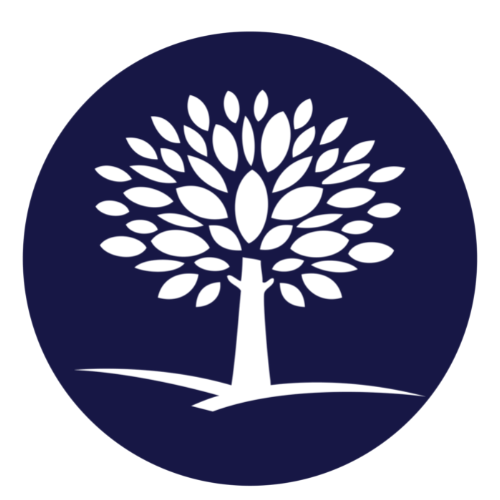Opiate and Opioid Addiction Treatment

By The Recovery Village Atlanta
Editor Jonathan Strum | Medically Reviewed By Dr. Jessica Pyhtila, PharmD
Last Updated: February 28, 2024
Editorial Policy | Research Policy
Opioid abuse, addiction and overdose continue to be a major problem in Georgia and throughout the United States. Fortunately, help is available.
The opioid epidemic continues to rage on throughout the United States, causing overdose death rates to rise in many parts of the nation. From 2020 to 2021, overdose deaths increased by 15.7% throughout the country. Unfortunately, Georgia far exceeds those numbers, as overdose deaths increased by almost 27% within the same one-year period.
Opioids are highly addictive drugs that can be difficult to quit without professional treatment. Continuing an opioid addiction can easily lead to a fatal overdose or other life-changing health risks, so it’s important to understand where you can turn for help and what opioid addiction treatment is like.
Opiate vs. Opioid
The terms opiate and opioid are often used synonymously, but there are some key differences between each term. Technically, the term “opiates” refers to naturally derived agents. Meanwhile, “opioids” is a broader term encompassing all agents that work on the brain’s mu opioid receptors. Therefore, “opioids” is an umbrella term that includes natural opiates as well as synthetic and semi-synthetic opioid substances.
Examples of Opiates
Naturally derived opiates from the opium poppy include:
- Morphine
- Codeine
- Opium
- Thebaine
- Heroin
It’s time to get your life back.
Examples of Opioids
As a drug class, opioids encompass natural opiates as well as semi-synthetic and synthetic agents. While opiates occur naturally, semi-synthetic and synthetic opioids do not. Instead, semi-synthetic opioids are chemically modified opiates, and synthetic opioids are entirely manmade.
Examples of semi-synthetic opioids include:
- Oxycodone (OxyContin, Percocet)
- Hydromorphone (Dilaudid)
- Hydrocodone combination products (Vicodin, Norco)
- Buprenorphine (Suboxone)
Examples of synthetic opioids include:
- Methadone (Methadose)
- Tramadol (Ultram)
- Fentanyl (Duragesic)
Why Are Opiates and Opioids So Addictive?
Opiates and opioids are some of the most addictive substances available. They have such a high addiction potential because of the way they work in the brain. Specifically, they trigger the brain’s reward system pathway. This pathway triggers the release of the neurotransmitter dopamine, which is one of the brain’s main feel-good chemicals.
After a person takes opioids, the brain is flooded with the euphoria of dopamine. The nucleus accumbens, a part of the brain that plays a key role in motivation, is especially affected by this process. The person then feels the urge to keep taking opioids to replicate the feeling. At the same time, the brain begins to become physically dependent on the opioid, making it difficult to quit without extremely unpleasant withdrawal symptoms.
Signs and Symptoms of Opioid and Opiate Abuse
Often, a person who is struggling with opioids starts to show signs and symptoms of abuse. These signs often reflect a change in behavior and may be accompanied by mood swings or other psychological changes. Signs include:
- A change in friends
- Poor grooming or hygiene
- A decline in performance at school or work
- Losing interest in activities that were previously enjoyed
- Changes in eating and sleeping habits
- Relationship problems at home, school or work
- Stealing or legal problems
Even with these signs, a person may deny that they are struggling with opioids. They may think they have their opioid use under control. However, doctors have identified a list of criteria that can be used to diagnose someone with opioid use disorder. The presence of two or more symptoms means that the person may be diagnosed with the disorder:
- Taking more opioids than intended or for longer than intended
- Unsuccessful efforts to cut down or stop opioid use
- Spending a lot of time obtaining, using or recovering from opioids
- Craving opioids
- Opioids causing problems at work, school or home
- Having ongoing social or family conflicts due to opioid use
- Giving up other activities because of opioids
- Taking opioids even when it is physically dangerous to do so, like before driving a car
- Continuing opioids even though it is causing physical or psychological problems
- Needing higher doses of opioids to achieve the same effects as before
- Having withdrawal symptoms if opioids are stopped
Opiate and Opioid Withdrawal
Opioid withdrawal symptoms can be overwhelming to deal with on your own. Having help through this extremely uncomfortable process is a big reason why so many people benefit from medical detox instead of ending their opioid use on their own. Withdrawal symptoms often start within 12 hours of the last dose and can last up to five days. Common opioid withdrawal symptoms include:
- Muscle aches
- Insomnia
- Increased tear production
- Sweating
- Runny nose
- Yawning
- Enlarged pupils
- Abdominal cramps
- Goosebumps
- Nausea and vomiting
- Agitation
- Anxiety
- Diarrhea

Do You Struggle With Opioid Addiction?
Let us build a treatment plan tailored to your needs and get you on the path toward a substance-free life.
Opiate and Opioid Addiction Treatment Options
Because opioids are so addictive, it is very difficult to successfully quit them without help. Making matters even more dangerous, a person who tries to quit opioids and then relapses may overdose because their body has lost tolerance for the higher doses of the drug. For these reasons, it is safest to undergo opioid addiction treatment under the care of medical professionals.
A variety of opioid addiction treatment settings and options are available, depending on the person’s needs.
Medical Detox
In medical detox, a person is weaned off opioids while under around-the-clock medical care in a residential setting. This is important because quitting opioids can lead to uncomfortable withdrawal symptoms that can increase the risk of a relapse. Further, some withdrawal symptoms, like dehydration from diarrhea or vomiting, can be dangerous. Having onsite doctors and nurses to monitor and treat withdrawal symptoms can help a person gently cleanse their system of opioids in the most comfortable way possible.
However, detox is only the first step in quitting opioids. To stay off opioids over the long term, a person should undergo rehab to explore why they began taking opioids in the first place and learn coping skills to lead an opioid-free life. Intensive individual and group therapy is an important part of rehab and takes place in all rehab programs.
Residential Rehab
People in residential rehab live at the treatment center and are able to focus completely on their recovery without the interference of outside obligations. Further, because they are living onsite, patients can rely on having a sober living environment that supports their goals of staying opioid-free.
Partial Hospitalization Program (PHP)
A partial hospitalization program starts to bridge the gap between residential rehab and outpatient care, so they often follow residential rehab. In a PHP program, the person will have fewer hours of treatment per week than in residential care and more free time for healing recreational activities. This helps the person maintain independence outside of rehab while focusing 20 or more hours per week on treatment.
Medication-Assisted Treatment (MAT)
Medication-assisted treatment, or MAT, is a cornerstone of opioid and alcohol addiction management. Added on to any rehab program as needed, it combines therapy with medication that can manage a person’s dependence on a substance, reduce cravings or create unpleasant effects if the person relapses. These medications can support long-term recovery by helping people avoid relapse.
Opiate and Opioid Abuse and Addiction Statistics
Between November 2020 and November 2021, more than 76,000 people died from opioid overdoses — an all-time high. Overall, more than 841,000 people have died since the opioid epidemic began in 1999. The opioid crisis continues to impact lives in many ways:
- In 2020 alone, more than 1,250 Georgians died of an opioid overdose, and more than 7,000 Georgians went to an emergency room because of opioid overdose.
- Each year, 297 out of every 100,000 people will be hospitalized due to opioid use.
- From 2017 to 2018, the number of prescriptions doubled for the opioid reversal agent naloxone (Narcan).
- In 2019 alone, more than 10 million Americans abused opioids, with the vast majority abusing prescription opioids.
Getting Help for Opiate and Opioid Addiction
If you or someone you love is struggling with opioid abuse and addiction, help is available. At The Recovery Village Atlanta, our addiction experts can help you leave your addiction behind and begin a healthier, opioid-free life in recovery. Contact us today to speak with a representative and learn more about opioid addiction treatment programs that can work well for you.
Sources
American Society of Addiction Medicine. “National Practice Guideline for the Trea[…] Use Disorder.” December 18, 2019. Accessed May 1, 2022.
Georgia Department of Public Health. “Opioid Overdose Surveillance Preliminary[…]Georgia, 2020.” 2020. Accessed May 1, 2022.
Department of Health and Human Services. “Opioid Crisis Statistics”>.” February 12, 2021. Accessed May 1, 2022.
Centers for Disease Control and Prevention. “Provisional Drug Overdose Death Counts”&[…]p;[…] Death Counts.” April 13, 2022. Accessed May 1, 2022.
Centers for Disease Control and Prevention. “Drug Overdose Deaths”>.” February 22, 2022. Accessed May 1, 2022.
Centers for Medicare and Medicaid Services. “Overview of Substance Use Disorder (SUD)[…]ystem Reforms.” April 2017. Accessed May 1, 2022.
PsychDB. “Opioid Use Disorder”>.” May 3, 2021. Accessed May 1, 2022.
National Institute on Drug Abuse. “Principles of Adolescent Substance Use D[…]ng treatment?” January 2014. Accessed May 1, 2022.
Arias-Carrión, Oscar; Stamelou, Maria; Murillo-Rodríguez, Eric; et al. “Dopaminergic reward system: a short inte[…]rative review.” International Archives of Medicine, October 6, 2010. Accessed May 1, 2022.Centers for Disease Control and Prevention. “Commonly Used Terms”>.” January 26, 2021. Accessed May 1, 2022.



